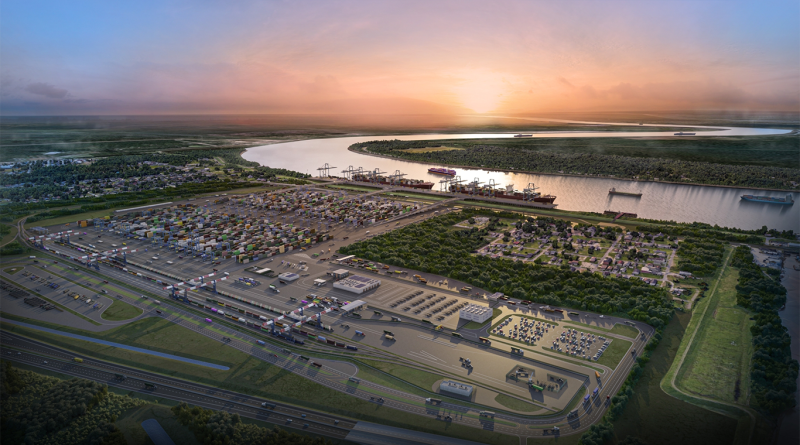Louisiana Terminal Project Moves Forward with EPA Sustainability Grant
The Louisiana International Terminal (LIT) at the Port of New Orleans (Port NOLA) has received a significant boost toward its sustainability goals. The US Environmental Protection Agency (EPA) has awarded the port a $1 million grant to support the development of a Sustainability Management Plan. This funding underscores the growing commitment to environmentally responsible infrastructure in the maritime industry, ensuring that port expansion aligns with long-term sustainability and economic growth.
As one of the largest planned terminal projects in the Gulf Coast region, the LIT is expected to reshape Louisiana’s role in global shipping. The port’s strategic location along the Mississippi River will eliminate air draft restrictions and accommodate the newest generation of container vessels. With the added backing of the EPA, Port NOLA can prioritize sustainability in its expansion, benefiting both the economy and the environment.
The role of EPA funding in port sustainability
The $1 million grant will fund the development of a Sustainability Management Plan, a crucial component in ensuring that the LIT adheres to high environmental and social responsibility standards. The plan will follow the Envision framework, a globally recognized standard for sustainable infrastructure that evaluates environmental, social, and economic factors to create resilient and equitable projects.
Port NOLA aims to integrate several sustainability initiatives into the terminal’s design and operations. Reducing greenhouse gas emissions is a top priority, with a focus on cleaner energy sources and shore power capabilities. Advanced water management systems will be implemented to minimize pollution, while improvements in energy efficiency will make terminal operations more sustainable. The port also plans to engage with local communities to address environmental concerns and ensure equitable development.
US Representative Troy A. Carter Sr. emphasized the broader impact of this funding, noting that investments in sustainable infrastructure will benefit Louisiana’s economy while setting a precedent for future port projects nationwide. The EPA’s investment in the LIT aligns with its broader goal of reducing carbon emissions and improving air quality in port communities across the country.
How the Louisiana International Terminal strengthens maritime trade
The Louisiana International Terminal is set to become a critical asset in the US maritime trade network. Strategically located in Violet, Louisiana—17 miles downriver from the Crescent City Connection bridge—the terminal is designed to enhance global shipping efficiency by eliminating air draft restrictions. This means it will accommodate larger container vessels that currently bypass the Port of New Orleans due to height limitations.
By enabling direct access for modern, post-Panamax ships, the terminal will significantly expand Louisiana’s import and export capabilities while strengthening connections with global markets. Its design also supports container-on-barge services, a growing segment of waterborne freight movement that reduces reliance on trucking and cuts congestion on highways. Improved intermodal logistics, including enhanced rail and road connections, will allow goods to move faster and more efficiently from ship to market.
Balancing growth with environmental responsibility
Sustainability is at the core of the Louisiana International Terminal’s development strategy. While the project is expected to bring substantial economic benefits, Port NOLA is prioritizing measures to minimize its environmental footprint.
Reducing emissions is one of the primary goals of the terminal’s sustainability initiatives. Shore power capabilities will allow docked ships to run on cleaner energy sources instead of traditional fuel, cutting carbon output. Noise and air quality management will also play a crucial role in mitigating the impact on nearby communities. Advanced technologies will be deployed to reduce both noise pollution and airborne pollutants. Additionally, the terminal’s infrastructure is being designed with climate resilience in mind, ensuring it can withstand sea level rise and extreme weather conditions.
The LIT project draws inspiration from other successful green port initiatives, such as California’s Sustainable Terminals Accelerating Regional Transformation (START) Project and the Port of Los Angeles’ Zero-Emissions Freight Facilities program.
Sources:
To keep up-to-date with our latest transportation and logistics news, subscribe to our newsletter today.
